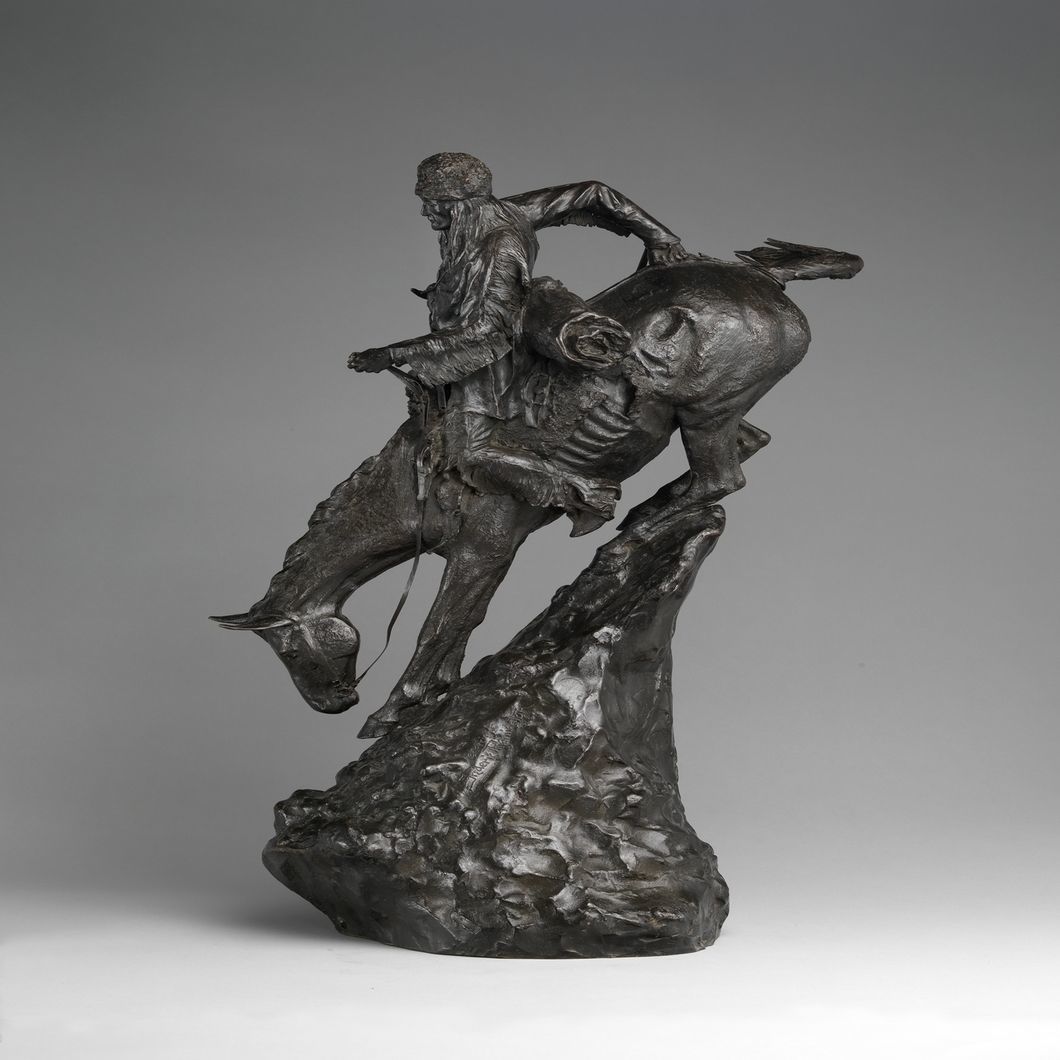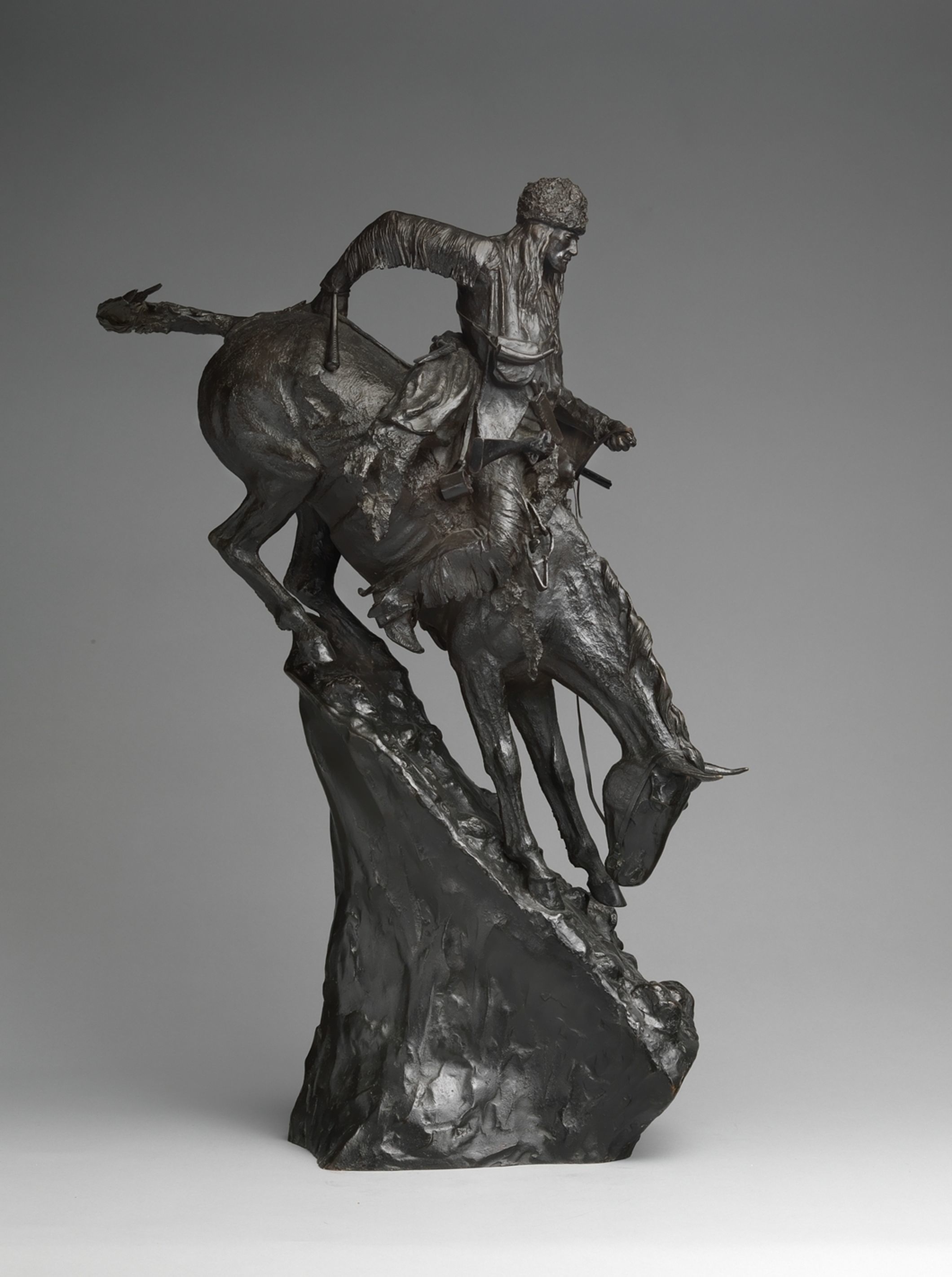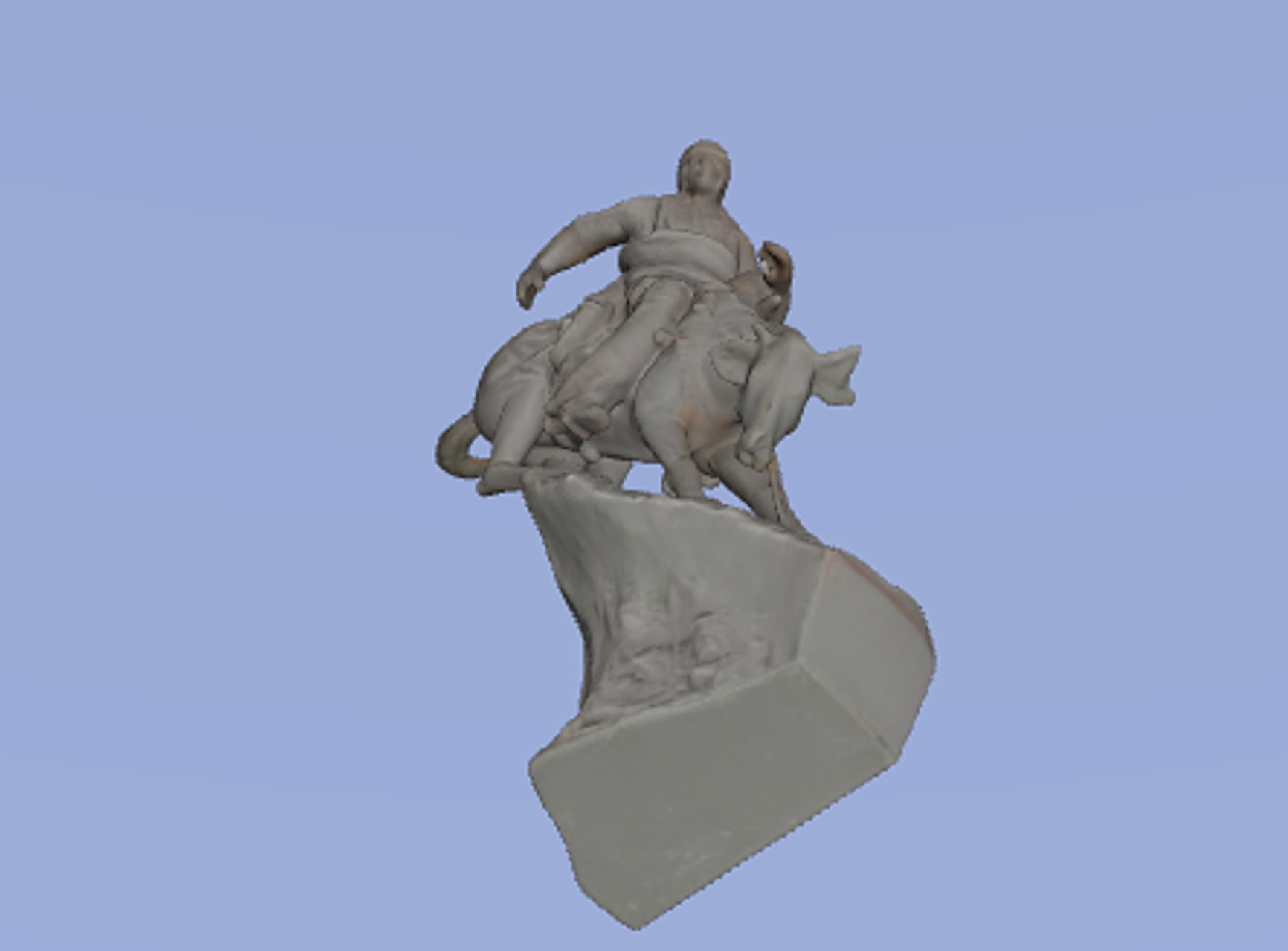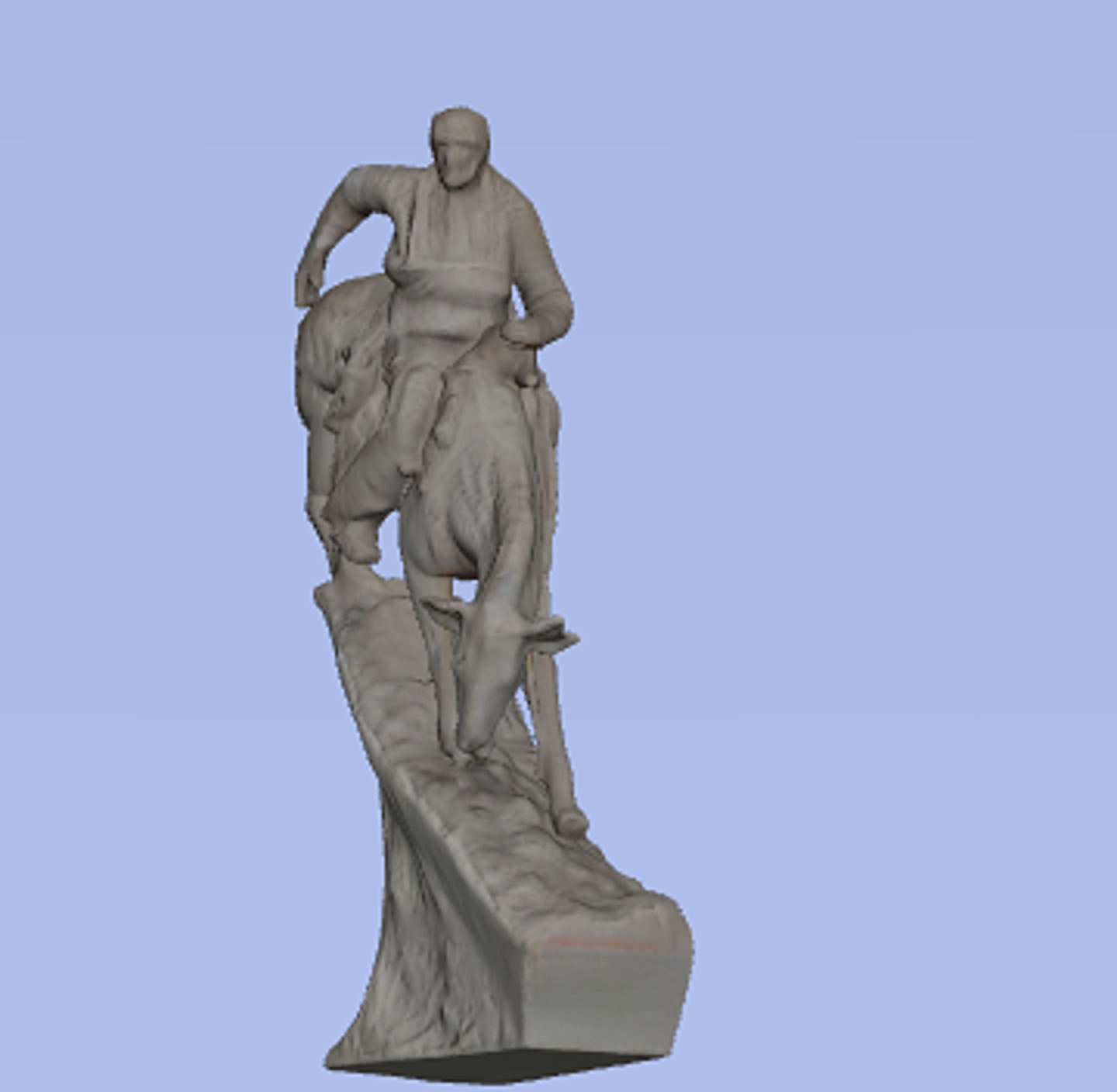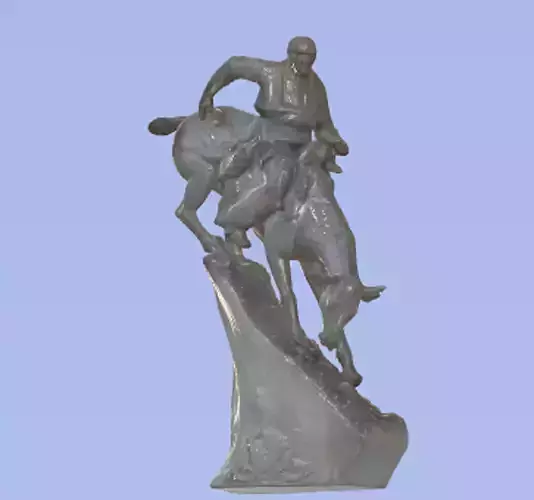
The Mountain Man 3D print model
Equal parts trapper and explorer, the Rocky Mountain man played a central role in the North American fur trade, peaking in the 1830s and 1840s. This iconic figure, who became known as the quintessential Euro-American Westerner, eventually gave way in the public imagination to the cowboy.
The Mountain Man** sculpture captures** a dramatic moment in the daily life of a buckskin-clad trapper and his mount, working together to descend a precarious slope. This harmonious portrayal of man and animal overcoming the wilderness is a striking image of the era.
Crafted by New York's Roman Bronze Works foundry using the lost-wax technique, the earliest Mountain Man statuettes boast a wide variety of textures. From the fringed buckskin garment to the animal's hairy coat and the rocklike base, every detail is meticulously rendered.
The Metropolitan Museum acquired this statuette, along with three others, from Remington in 1907.
Artist: Frederic Remington (American, Canton, New York 1861–1909 Ridgefield, Connecticut)
Founder: Cast by Roman Bronze Works
Date: 1903, cast by March 1907
Culture: American
Medium: Bronze
Dimensions: 27 3/4 x 12 x 10 in. (70.5 x 30.5 x 25.4 cm)

